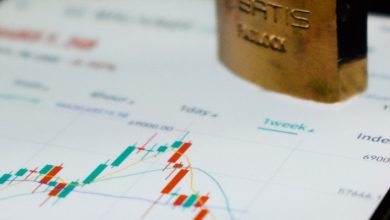A Deep Dive into Terra: Stablecoins and DeFi

- Understanding the Basics of Terra and its Stablecoin
- Exploring the Benefits of Stablecoins in DeFi Ecosystem
- The Role of Terra’s Native Token Luna in DeFi
- Analyzing the Mechanisms Behind Terra’s Stability Protocol
- Comparing Terra to Other Stablecoin Projects in the Market
- Future Possibilities and Challenges for Terra in the DeFi Space
Understanding the Basics of Terra and its Stablecoin
Terra is a blockchain platform that aims to provide price stability through its stablecoin, Terra. Terra’s stablecoin is backed by a basket of fiat currencies and other cryptocurrencies, making it less volatile than other cryptocurrencies like Bitcoin or Ethereum. This stability makes it ideal for everyday transactions and as a store of value.
One of the key features of Terra’s stablecoin is its algorithmic mechanism that helps to maintain its peg to the US dollar. This mechanism adjusts the supply of Terra tokens based on demand, ensuring that the value of the stablecoin remains stable over time. This stability is crucial for users looking to make transactions or hold assets without worrying about price fluctuations.
Terra’s stablecoin has gained popularity in the decentralized finance (DeFi) space due to its stability and ease of use. Users can easily swap Terra tokens for other cryptocurrencies or fiat currencies on various decentralized exchanges, making it a versatile asset for DeFi applications.
Overall, Terra’s stablecoin offers a reliable and stable alternative to traditional cryptocurrencies for everyday transactions and as a store of value. Its innovative algorithmic mechanism and widespread adoption in the DeFi space make it a promising asset for the future of finance.
Exploring the Benefits of Stablecoins in DeFi Ecosystem
Stablecoins play a crucial role in the decentralized finance (DeFi) ecosystem, providing a reliable store of value and a medium of exchange for users. One of the key benefits of stablecoins is their price stability, which is achieved by pegging them to a basket of assets or a fiat currency.
By using stablecoins in DeFi protocols, users can mitigate the volatility risks associated with cryptocurrencies while still enjoying the benefits of blockchain technology. Stablecoins also enable cross-border transactions and financial inclusion, as they can be easily transferred and used for payments anywhere in the world.
Furthermore, stablecoins provide liquidity to DeFi platforms, allowing users to trade and lend assets more efficiently. This liquidity helps to lower transaction costs and improve the overall user experience in the DeFi ecosystem. Overall, stablecoins are a fundamental building block of DeFi, facilitating the growth and adoption of decentralized finance applications.
The Role of Terra’s Native Token Luna in DeFi
Terra’s native token Luna plays a crucial role in the decentralized finance (DeFi) ecosystem. Luna serves as the governance token for the Terra blockchain, allowing holders to participate in key decision-making processes within the network. Additionally, Luna is used as collateral to help stabilize the value of Terra stablecoins, such as UST. This mechanism, known as seigniorage, helps to maintain the peg of Terra stablecoins to their respective fiat currencies.
Moreover, Luna holders can earn rewards by staking their tokens in the Terra network. By staking Luna, users contribute to the security and stability of the blockchain while also receiving a portion of transaction fees generated on the network. This incentivizes token holders to actively participate in the ecosystem and support the overall growth of Terra’s DeFi offerings.
Furthermore, Luna plays a crucial role in the Terra ecosystem’s algorithmic stablecoin protocol. As part of the protocol, Luna is used in the minting and burning of stablecoins to help regulate their supply based on market demand. This innovative approach to stablecoin issuance ensures that Terra’s stablecoins remain resilient and responsive to changing market conditions.
Overall, Luna’s multifaceted utility within the Terra ecosystem underscores its importance in driving the growth and sustainability of DeFi applications on the network. By leveraging Luna as a governance token, collateral asset, staking asset, and integral part of the stablecoin protocol, Terra is able to offer a robust and dynamic DeFi environment for users to engage with.
Analyzing the Mechanisms Behind Terra’s Stability Protocol
The stability protocol of Terra plays a crucial role in ensuring the stability of its stablecoin. This mechanism is designed to maintain the value of the stablecoin at $1 by adjusting the supply of Terra’s native token, Luna. By analyzing the mechanisms behind Terra’s stability protocol, we can gain a deeper understanding of how it functions in the decentralized finance (DeFi) ecosystem.
One key aspect of Terra’s stability protocol is the algorithmic adjustment of Luna’s supply based on the demand for the stablecoin. When the price of the stablecoin deviates from $1, the protocol automatically adjusts the supply of Luna to bring it back in line. This mechanism helps to stabilize the stablecoin and maintain its peg to the US dollar.
Another important feature of Terra’s stability protocol is the use of decentralized autonomous organizations (DAOs) to govern the protocol. DAOs are community-run organizations that make decisions through voting by token holders. This decentralized governance structure ensures that the stability protocol remains transparent and resistant to centralization.
Additionally, Terra’s stability protocol incorporates a mechanism known as “seigniorage” to help stabilize the stablecoin. Seigniorage involves using the profits generated from the stability protocol to buy back Luna from the market, reducing its supply and increasing its value. This helps to offset fluctuations in the stablecoin’s price and maintain its stability over time.
Overall, the mechanisms behind Terra’s stability protocol are designed to ensure the stability and reliability of its stablecoin within the DeFi ecosystem. By analyzing these mechanisms, we can better understand how Terra maintains its peg to the US dollar and continues to provide a secure and efficient means of transacting in the digital economy.
Comparing Terra to Other Stablecoin Projects in the Market
When comparing Terra to other stablecoin projects in the market, it is important to consider the unique features and characteristics that set it apart. One key aspect that differentiates Terra from its competitors is its innovative algorithmic design, which helps maintain price stability by adjusting the coin supply based on demand. This dynamic mechanism sets Terra apart from traditional stablecoins that rely solely on collateralized assets.
Additionally, Terra’s integration with the Cosmos network allows for seamless interoperability with other blockchain platforms, providing users with increased flexibility and access to a wider range of decentralized finance (DeFi) applications. This interconnected ecosystem creates a more robust and resilient infrastructure for stablecoin transactions and lending activities.
In contrast to some other stablecoin projects that have faced regulatory challenges or concerns regarding the transparency of their reserves, Terra has been proactive in addressing these issues by implementing rigorous audits and reporting mechanisms. This commitment to compliance and accountability has helped build trust among users and regulators alike, further solidifying Terra’s position in the market.
Overall, Terra’s innovative design, interoperability, and commitment to transparency make it a compelling option for those looking to engage in DeFi activities while minimizing the risks associated with traditional fiat currencies. As the stablecoin market continues to evolve and expand, Terra’s unique approach and features position it well for long-term success and growth.
Future Possibilities and Challenges for Terra in the DeFi Space
The future of Terra in the decentralized finance (DeFi) space holds immense possibilities and challenges. As Terra continues to expand its ecosystem and gain traction among users, it opens up new opportunities for innovation and growth. One of the key strengths of Terra is its stablecoin offerings, such as UST, which provide a reliable store of value for users looking to transact in a stable digital currency.
However, as Terra grows, it will also face challenges in maintaining its stability and security in the DeFi space. The volatility of the cryptocurrency market, regulatory uncertainties, and competition from other DeFi projects are some of the hurdles that Terra will need to overcome in order to stay relevant and successful.
Despite these challenges, Terra has the potential to revolutionize the DeFi space with its unique stablecoin model and innovative blockchain technology. By leveraging its existing partnerships and community support, Terra can continue to drive adoption and create new opportunities for users to participate in the decentralized economy.



